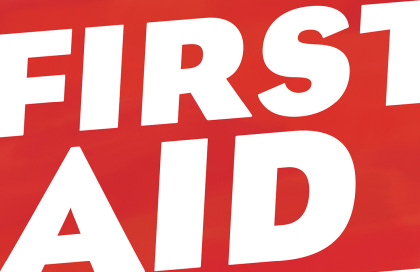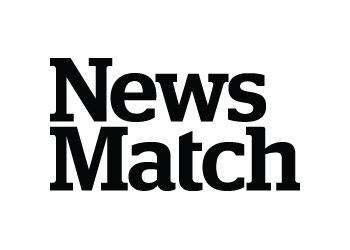Hey, welcome back to our mission: Learning to defend ourselves against the health care system’s ongoing campaign to bleed us dry.
We started with how to avoid picking crappy insurance. Next up: the advanced tools for choosing.
For instance, all the alphabet soup for different flavors of health insurance: HMO, PPO, POS, EPO, HDHP, HSA. Ugh.
I called a couple of my very-favorite health-insurance nerds for help.
Which was extra-good, because they also had tips for checking to make sure any given insurance plan you’re looking at is not crappy.
ALSO: We’ve got a new episode of An Arm and a Leg—coming out at the very same time as this newsletter—that sums up some of those tips, previews next week’s insurance-picking finale, and is also... super fun. (Which, I know: It’s about health insurance. But honestly, check it out.)
Insurance alphabet soup crash course:
Heads-up: You’re gonna need our earlier round of vocab words, especially the dreaded “out of network.”
HMO: Their network — the docs and providers and drugs they cover — is your whole health care system. Basic rule: If you go out of network, it's not covered. Period. Also, want to see a specialist? Not only does it need to be in-network, but you probably need a referral from your primary care doc.
(OK, they have to cover emergency services — that’s the law. But have fun arguing with them about whether your situation was really an emergency.)
PPO: Their network is way cheaper for you than the rest of the health care system, but they’ll still pay at least something even if you go outside it. With a lot of caveats. All the evils we talked about under “out of network” last time? Like how there’s no limit to out-of-pocket expenses? Those kinds of caveats.
POS: Kind of a hybrid between PPO and HMO: Like an HMO, you can only see a specialist if your primary-care doc refers you. But like a PPO, you can get some coverage even if you go out of network.
EPO: Basically an HMO, except you’re less likely to need a referral from your primary-care doc to see a specialist.
HDHP/HSA: Don’t worry about this one. It’s gonna be one of the above flavors, with an additional twist involving potential tax savings. Mainly of interest to people who make lots of money and want to avoid some tax. (Trust me, if you need to know about this, you’re the kind of person who should have a good accountant; they’ll tell you all about it.)
(What do the letters actually stand for? It’s hilarious how little these phrases mean. We’ve got a key at the very bottom, if you’re curious.)
OK, on to…
Advanced insurance-picking stuff
First thing: There’s a BIG difference between doing this if you get your insurance through work versus getting it on your own.
That’s because mostly, if you get insurance through work, you only get one or two choices.
But if you’re looking on an Obamacare exchange, it could be dozens. More than a hundred in some places. That’s overwhelming. So here’s what you should do…
BEFORE YOU START: Go directly to healthcare.gov.
Do not ask Google to take you to “ACA Enroll” or “Obamacare enrollment” or anything else.
There are a few other legit sites—HealthSherpa is one—but otherwise, just beware.
Because: scammers have bought up the Google search results. They are waiting to take you someplace bad. You can hear all about it in today’s episode of An Arm and a Leg, or just trust us for now. We’ll have the gory details right here next week.
Ok, now...
#1 Get help.
Tools on healthcare.gov and HealthSherpa can help narrow down your choices. They’ll usually have you take a quick survey — about which doctors you see, what medicines you take, your health, and how much medical care you expect to need in the coming year — and they’ll give recommendations.
At minimum, these tools can help you cull plans that don’t include your docs or your drugs, stuff like that.
You can also get a broker or what’s called an “assister” to work with you, and you can get referrals to both directly from healthcare.gov.
Assisters can be especially useful if you think you might qualify for a program like Medicaid. Their services are free — your tax dollars at work! For the most part, brokers don’t charge a fee either — they’ll get a commission from the insurer.
Finally, healthcare.gov and other Obamacare sites, including HealthSherpa, show “quality ratings” for lots of plans, from one star (total crap) to five (not-crap).
Not all plans have ratings — they need to have been around for at least three years —so if a plan doesn’t have a rating, that doesn’t mean it’s bad. Just new.
#2 Read the fine print and keep clicking to find it
Here’s where knowing some amazing nerds keeps paying off.
Karen Pollitz, a senior fellow at the Kaiser Family Foundation, has been studying health insurance for decades. And as a cancer survivor, she’s had the opportunity to study her own plans up close and extremely personal.
She knows the shortcuts from websites like HealthSherpa or healthcare.gov are helpful, but they aren’t enough. They’re based on algorithms, and they don’t catch everything.
“You need to verify,” she says. We’re going to help you learn how.
She suggests four places to look to make sure you get what you need. The first three are all there at healthcare.gov, or any other place that’s offering legit, Obamacare-compliant plans. (“You may have to click around a little,” she says.)
Look at the provider directory
Say you’ve checked for plans where your family doctor is in-network? Double-check.
This fall, Karen’s been helping a family member in New Jersey look for a plan on the state Obamacare exchange. They’ve got a specific doctor they really need to see, and that doc wasn’t showing up as being covered by any of the plans.
But Karen went to each plan’s provider directory. She found somewhere that doc was actually in the network.
Bonus tip: Take a screenshot, and keep it handy. You find the doc you want in that provider directory? Document it. Because what if you go to a doc that’s supposed to be in-network…and suddenly the insurer is like, “Naw, we don’t cover that guy”? It happens.
If that happens to you AND you’ve got the screenshot, insurance super-nerd Sabrina Corlette says you can take it to your state insurance regulator. “Many insurance departments will go back to the carrier and say, ‘Nuh-uhh! You’ve got to pay Dan’s bill.’”
Find the formulary
This is the list of drugs that the plan covers — and how much it covers them. (Remember “tiers” from last time? Prescription drugs are one place tiers come into play, big time.)
If you take an expensive drug — or multiple drugs — this is need-to-know, and worth double-checking.
As Karen puts it: “Are you going to have to pay a $10 copay or a hundred-dollar copay, or 50 percent? My cousin’s drug costs $5,000 a month. We’re not liking the 50 percent.”
See the summary of benefits and coverage
This document is where you find details. “It’s not the brochure,” says Karen. “That’s the marketing thing. This one’s...kind of an ugly-looking document.” That’s how you know you’ve got the right one.
The Summary of Benefits and Coverage is a grid, with the same layout for every plan, so you can compare apples to apples. Page one, line one: Deductible. Page one, line 2: Other deductibles.
“Because sometimes plans have, you know, three or four deductibles,” Karen reminds us. “One for hospitals, one for drugs...” (We know! Argh.)
Check the denial rates
Here’s something I didn’t know: Insurers offering Obamacare plans are supposed to report a bunch of data about how often they deny claims, and why. Karen did know, and now you know.
“Anthem, for the last couple years, has been pretty much leading the nation in denied claims,” she says. “So if that’s the cheapest plan [...] just know that you may have to go some rounds with them, and may not get your claim paid, even if you stay in-network.”
Insurers don’t always report all the denial-rate data they should (surprise!), but Karen analyzes all the reported data every year and posts the data in a spreadsheet. Here’s her most-recent writeup and spreadsheet.
***
We’ve got one more installment of Avoiding Crappy Insurance to come.
It’s got two things in it:
Some scams to avoid.
Some actual good deals.
These will be most useful for folks who are buying their own insurance. If you get insurance from work, you’ve probably got the info you need.
But (a) you probably know somebody who could use this information. And (b) some of the deals are good enough that if you’re only staying in your job for the health insurance? Well, you might find it worthwhile doing some new math. No guarantees, but still.
Thanks for joining us for the beginning of First Aid Kit!
If you like what we’re doing, I hope you’ll donate to support this project.
We’ll never charge for subscriptions, but making this newsletter and An Arm and a Leg is my actual full-time job. I also pay a crew of amazing people, whose work makes this stuff better than I possibly could do on my own. Your donations make it possible.
And right now, your donations count for double: During November and December, a project called NewsMatch will match every single one.
So please, step right up and donate! You’ve got five bucks? They’ll turn it into ten. You’ve got $100? They’ll make it $200.
And if you make a monthly pledge, they’ll match 12 months’ worth, upfront: Sign up for $5 a month, and they’ll give us $60 right away.
SUCH A DEAL, RIGHT? Sign up for any amount—a one-time gift or a monthly donation—right here.
Thank you! I’ll be back with the next installment in a week.
Till then, take care of yourself.
Dan
1. Refresher: Some key links from this guide, in one place.
Here’s that healthcare.gov link to “get help” again. Free help.
Remember, “assisters” are paid by the government and can help with Medicaid and other government programs as well as health insurance; “brokers” get commissions from insurers… but their biggest incentive generally is for you to be happy with their work and come back to them next year, rather than pushing any particular service. (You may want to interview more than one.) And a broker may have deeper familiarity with specific insurers, etc.
Here’s that spreadsheet with data on how often specific insurers deny claims.
2. Other how-to-guides: If you wanna double-up, dig deeper, or hear things in a different way:
Super-nerd Louise Norris has two guides that are denser and more-technical than ours. And an absolutely endless well of deeper dives. If you’re game, pour a cup of coffee and start with her FAQ on choosing the best health plan for you, and her Guide to Obamacare enrollment for 2022.
If you’d prefer to *listen* to your lesson (and you’re all caught up on An Arm and a Leg) our pals at NPR just did their own how-to-pick-insurance guide. LOTS of overlap with what you’re seeing here.
NPR also has its own glossary of confusing health-insurance terms—with pretty much the same terms we’ve been defining here. (Hey, this stuff is confusing, and someone else’s explanation may work better for you than ours!)
Health Insurance Alphabet Soup Decoder: What the letters stand for.
(Because you were curious enough to scroll ALL the way down…)
HMO = Health Maintenance Organization.
PPO = Preferred Provider Organization.
POS = Point of Service.
EPO: Exclusive Provider Organization
HDHP: High-deductible health plan
HSA: Health Savings Account




